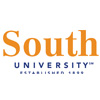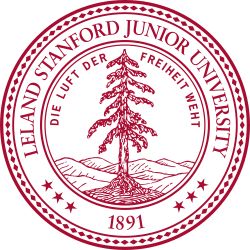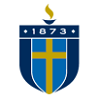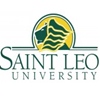Converse University is a private liberal arts college located in Spartanburg, South Carolina, USA. Here is a detailed introduction:
School History
The school was founded in 1889 by Darius L. Salter and a group of Spartanburg citizens. It was originally a women's college with the original intention of providing high-quality higher education for women. With the changing times, it began to enroll male students in 1954 and gradually developed into a coeducational university.
School Overview
Student size: The school is moderately sized, with about 1,200 students. This size helps to create a close campus community atmosphere, allowing students to better communicate and cooperate with each other.
Student-faculty ratio: The student-faculty ratio is about 1:10, which allows teachers to pay full attention to the learning progress and personal development of each student and provide personalized educational guidance.
Campus environment: The campus covers an area of about 82 acres and is located in the city of Spartanburg. The campus architectural style combines classical and modern features, with green trees and a pleasant environment. The school is surrounded by complete urban facilities and convenient transportation, providing students with a good learning and living environment.
School colors: The school's representative colors are pomegranate red and gray.
Mascot: The school's mascot is Valkyrie, which symbolizes strength and courage.
Academic situation
Major settings:
Undergraduate majors: Provide a wide range of undergraduate majors, covering art, music, drama, English, history, psychology, biology, chemistry, mathematics, business management, education and other fields. For example, in the field of art, the school's visual arts major cultivates students' skills in painting, sculpture and other fields; in the music major, there are vocal music, instrumental music and other directions to provide students with a comprehensive music education.
Graduate majors: There are also some graduate courses, such as Master of Education, which provide students with opportunities for further study.
Teaching features:
Small class teaching: Small class teaching is the main method, with a small number of students in each class. This teaching model can promote students to actively participate in classroom discussions, and teachers can better teach students in accordance with their aptitude, pay attention to students' individual differences, and cultivate students' critical thinking and communication skills.
Combination of practice and theory: Focus on practical teaching links. For example, in the business management major, students will be arranged to intern in local companies; students majoring in music have the opportunity to participate in various performances. Through these practical activities, students can apply the theoretical knowledge they have learned to actual scenarios and improve their ability to solve practical problems.
Interdisciplinary learning: Students are encouraged to conduct interdisciplinary learning, such as combining art with psychology to explore the impact of artistic creation on psychology; or combining history with business management to study the historical evolution of business development. This interdisciplinary learning method broadens students' horizons and cultivates their comprehensive qualities.
Academic resources: The school has modern teaching facilities, such as a library with a rich collection of books, journals and electronic resources covering various disciplines, which is convenient for students to conduct academic research; advanced laboratory equipment provides good experimental conditions for science and engineering students; art studios provide creative space for students majoring in art. In addition, the school often invites well-known scholars, artists, etc. to the school to hold lectures and seminars, providing students with opportunities to contact cutting-edge academic ideas and artistic concepts.
Student life
Clubs and activities: The school has a variety of student clubs and organizations covering academic, cultural, artistic, sports and other aspects. For example, there are academic clubs such as the History Research Club and the Science Exploration Club, which help students explore subject knowledge in depth; cultural clubs such as the International Cultural Exchange Club promote exchanges between students from different cultural backgrounds; art clubs such as the Drama Club and the Dance Club provide students with a stage to showcase their talents; sports clubs such as the Basketball Club and the Tennis Club encourage students to participate in sports activities and enhance their physical fitness. These clubs often hold a variety of activities, such as academic lectures, cultural festivals, art performances, sports competitions, etc., which enrich students' extracurricular life.
Accommodation life: The school offers a variety of accommodation options, including traditional dormitories and apartment-style dormitories. The dormitory life facilities are complete and the environment is comfortable, providing students with good living conditions. Dormitory life also promotes communication and interaction among students, and enhances students' sense of collective belonging and teamwork spirit.
Sports activities: The school is a member of the National Collegiate Athletic Association (NCAA), and the school sports teams participate in relevant sports competitions. The school's sports include basketball, tennis, volleyball, cross-country, etc. The team spirit and competitive consciousness shown by student athletes in the competition also inspire other students.
Application and Funding
Application Requirements:
Undergraduate Application: Usually you need to submit high school transcripts, letters of recommendation, personal statements, standardized test scores (such as SAT or ACT) and other materials. The school will comprehensively evaluate the student's academic performance, personal strengths, community service experience and other factors to decide whether to admit.
Graduate Application: Depending on the requirements of different majors, you need to submit undergraduate transcripts, letters of recommendation, personal statements, resumes, GRE or GMAT scores (some majors require) and other materials.
Tuition and Funding: The school provides a variety of scholarships, grants, loans and other funding methods to help students reduce their financial burden. The school will assess the amount of funding based on factors such as students' academic performance and family financial situation.
-

Harvard University
-

Massachusetts Institute of Technology
-

South University
-

University of West Georgia
-

Stanford University
-

Northwest Nazarene University
-

Hawaii Pacific University
-

Shorter University
-

Nova Southeastern University
-

Saint Leo University
-

Mesoamerican University
-

Istmo University
-

Mariano Galvez University of Guatemala
-

Regional University of Guatemala
-

Galileo University
-

Francisco Marroquín University
-

Rafael Landívar University
-

University of the Valley of Guatemala
-

University of San Carlos of Guatemala
-

Technological Institute of Tlaxcala Plateau
-

Golfo University
-

Technological University of South Sonora
-

Technological University of Huejotzingo
-

Tizimín Institute of Technology
-

Chilpancingo Institute of Technology

